-
Posts
1,219 -
Joined
-
Last visited
Content Type
Profiles
Forums
Blogs
Gallery
Events
Store
Posts posted by lambert
-
-
Cited by RobW (Posted 13 September 2009)
" As indicated in post #23 here are a couple of comparison pics of a regular French made Jap vic repro (on the left) and another French made cast copy repro (on the right).
Note the smaller suspender ball, shallower level of detail and slightly pitted appearance, attributable to the casting process. The diameter of the cast copy is 34.6 mm compared to 35.8 mm for the standard French repro compared to 36.5 mm of the official strike.
There is considerable flashing, pits, and filing marks on the rim indicative of the casting and finishing process.
Hope it is of use. "
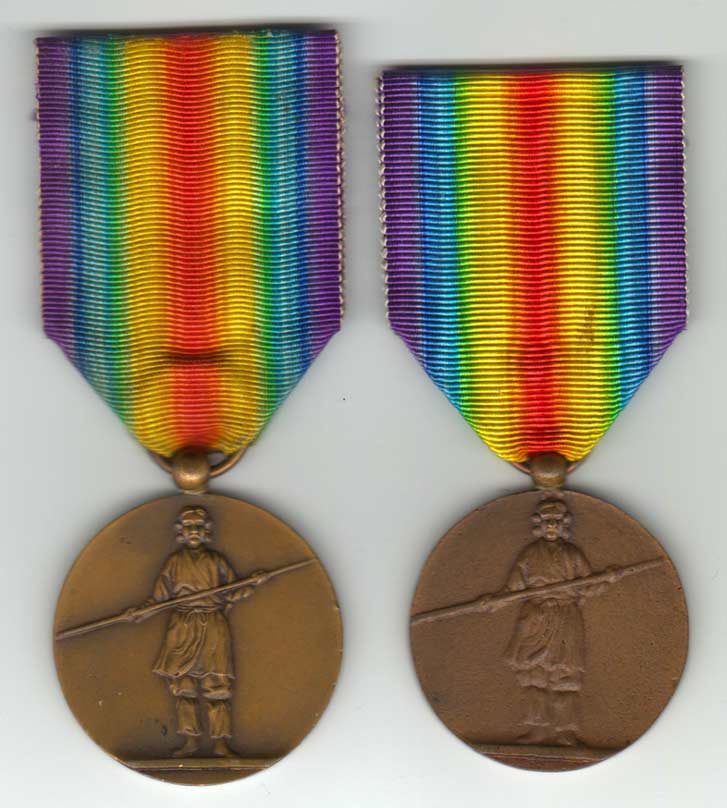
And the reverse

Regards,
Rob
I hope I have left this topic as fully as possible (yet)
Lambert
0 -
Cited by RobW (Posted 24 July 2009)
" For a direct L-R side by side comparison here are a French made repro and a Japanese vic official. The first of the French made repro's were produced in the mid to late 1920's and were not all edge marked. Some have been seen with just BRONZE on the edge with others unmarked. Those produced in the 1930's have the edge marking 'MADE IN FRANCE' to comply with the US Tariff Law of 1931, which required marking with the country of origin.
There is, in addition, to the standard repro, a cast copy of the French repro as well. It has an even shallower field of detail, is suspended by a ball suspender and has the same French made ribbon. When I can find it I shall post pics. "
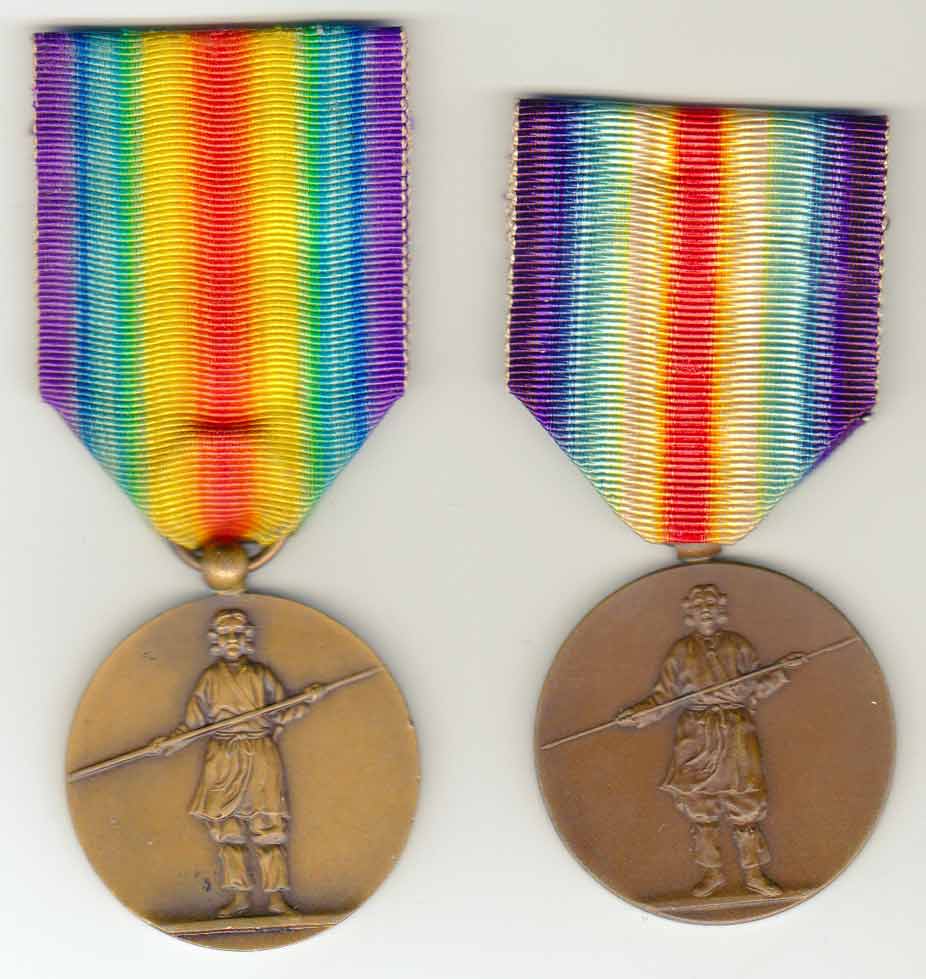
And the reverses.
Note the differences in detail of the flags and the slight differences and weight of the japanese inscriptions around the edge. In addition there are a number of instances where different characters are used, in particular at the bottom centre 6 o'clock position on the rim inscription.
Hope these pics help comparisons.
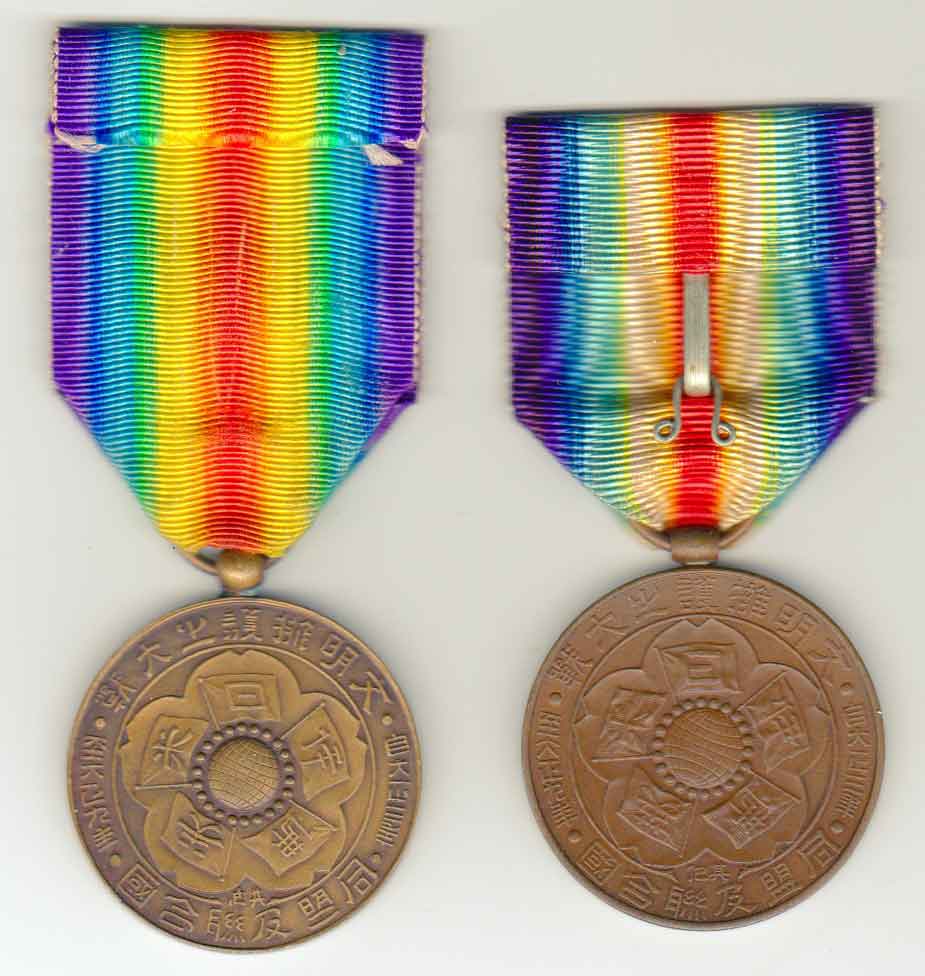
The ribbon that is used on the Japanese vic is generally chacterised by having quite a paler appearance than the ribbon used by other countries for their vics. Of note is that the yellow and green bands are generally quiet pale and almost absent, although I have a specimen in my collection that has a definitive green band. All original Japanese vics will have the standard 'hook and eye' on the ribbon reverse, for mounting, as well. The French ribbon again has a number of different variations depending on when it was produced but the colours are generally consistent, pretty vivid and strong.
I shall post a side-by-side comparison of two Japanese vics with slightly different ribbon hues when I have time shortly
Here are 2 of my japanese vics for a side-by-side comparison. Note the differences in ribbon hues between the two, and the strength of the green band on the medal on the left.

Here are the reverses.
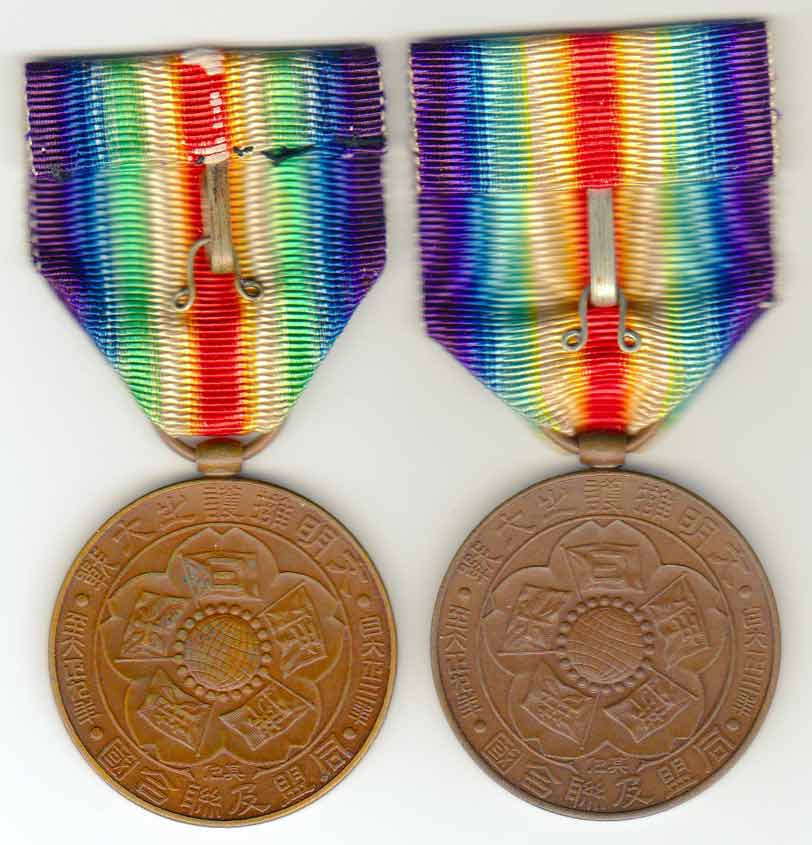 0
0 -
Cited by Paul L Murphy (Posted 23 October 2008)
" I have been keeping a record of certificate numbers which I encounter for Japanese medals since the medal rolls were sequential. So far the highest number Victory Medal certificate I have encountered is 99,533.
For the 1914-15 War Medal the highest certificate I have seen so far was 136,512 and for thw 1914-20 War Medal it is 310,037. I suspect that the Victory Medal was only given to those who got the earlier 1914-15 medal and not the 1914-20, which was mainly for the Siberian Expedition in 1919-20. This is only a personal view and I have no evidence to support it (yet). "
0 -
Cited by Kev in Deva (Posted 23 October 2008)
" With regards the Japanese Inter-Allied Victory Medal,
page 61 of the book by Mr. Alexander J. Laslo
The Inter-Allied Victory Medal of WW1.
2nd Revised Edition:-
QUOTE
Designer:- Masakichi Hata (1882 - 1966)
Manufacturer:- Osaka Mint.
Number Issued:- Approximately 400,000 (21) .
(21) In correspondence with the author, the osaka Mint states the Japanese Victory Medal was struck during the 1920 but that the production quantity was not known. The Osaka Mint report for fiscal year 1921-22 noted that the Victory Medal was struck during the fiscal year: that is, between April 1, 1920 and March 31 1921. Given the statement of the Mint that the Victory Medal was struck during 1920 together with the September 16 1920 date of the Imperial Order which established the medal, it is presumed the Victory Medal was struck sometime between the date of the order and December 31 1920.
The total production of bronze medals for the fiscal year 1920 - 21 was 908,975. In addition to the Victory Medal, this figure included the 1914-1920 War Medal, the First National Census Commemorative Medal, and a number of other Medals. For this reason, the First Edition, estimate of issued Victory Medals has been reduced from 700,000 to 400,00 medals
A copy of the Japanese Victory Medal was produced in France, probably a short time after the original was issued. This copy is easily to recognise by its ball suspension device and shallow depth of striking compared to the original. There are also die variances such as smaller globe, thinner characters, and the absence of accent lines inside the flags. Some are marked on the edge with "MADE IN FRANCE".
Since the above book was published there are at least two modern copies being touted on the market, one in a very dark chocolate brown material, the other in shinny brass material, both have the British Inter-Allied medal ribbon attached and are usually offered without the box.
The original Japanese Victory Medals complete with wooden box show up on the online auction pages more often than the original Greek, Portuguese, versions, with the most rare being the Brazilian, Siamese, Philippines, followed by the Greek, Romanian and Czechoslovakian Medals.
The "Polish" Inter-Allied version is pure fantasy and offered mainly on American Ebay.""
0 -
I researched some more and found this same forum, important sections on the Vic Japanese who were "lost" and need to be in this topic:
Cited by Kev in Deva (Posted 12 February 2006)
" With regard the Japanese there were two types an Official, designed by Masakichi Hata and a "REPRO" produced in France a short time after the original was issued. The copy can be identified by its ball suspension device and shall depth of striking compared to the original Official issue.
There are also die diferences such a smaller globe, slimmer characters, and the accent lines in the flags are missing. Also another point to note is the medal dosent fit exactly into the recess in the wooden box
Numbers Issued by Japan: approximtely 400,000
Some of the copies are marked on the edge "MADE IN FRANCE".
Additionaly very pale lines of green and yellow distinguish original Japanese Victory Medals from the Western made ribbons.
POINT TO NOTE: In the last couple of years this Japanese type as well as the more rarer Allied Victory medals of Brazil, Cuba, Siam-Thailand, Greece, Portugal, Romania are being copied/faked. I believe they are coming out of the Birmingham area of England, one seller on British Ebay has the decency to declare them for what they are, however another EBayer out of Belgium regularly lists them as originals , the give away is the bog standard chocolate-brown colour and same ribbon to all. "
0 -
Thanks Bill
:cheers:
0 -
This is my example Vic Italian version Loriol & Castelli (Official, type 2?)
With the Ribbon Italian original, in reasonable condition.
Coming directly from Italy to Brazil ..

Well. I have not decided if I'll get all Italian Vic manufacturers .. Perhaps in the future ...
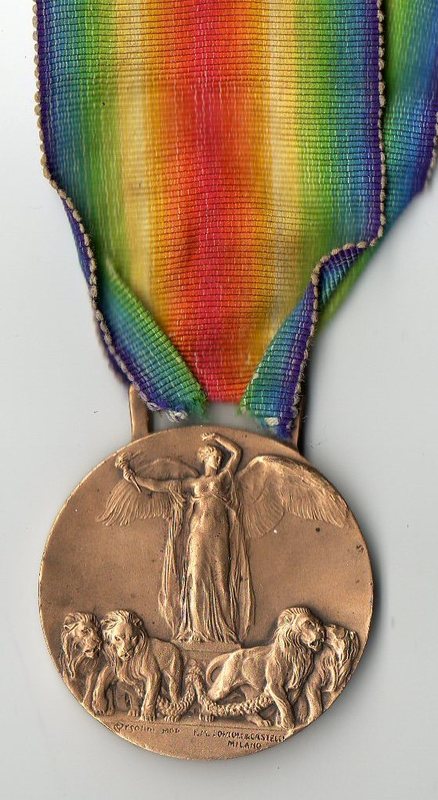

Lambert
0 -
Beware medals of Israel!
The falsification of Brazilian Vic on ebay
Copy made in England. U $ 499.00
Of course, the seller does not inform, that this is not a copy.
0 -
Yes, Tim
is insane, you can find some pretty stupid to believe.
Unfortunately, a "collector" inexperienced, and an easy prey for these sellers.
Lambert
0 -
She is back!
I recently found on Ebay, the "famous" Polish Vic.
Item Ebay nº 360391504683
"WW I POLISH VICTORY MEDAL WITH LARGE EAGLE SIGNED RARE"
 US$ 375
US$ 375Lambert
0 -
Sorry Andrew,
I can not find anything similar in catalogs German Emperor and German WWI ..
The picture is also blurred .. does not help much.
Lambert
0 -
Hello
It seems to be a
Orden vom Zähringer Löwen Ritterkreuz 2. Klasse mit Schwertern
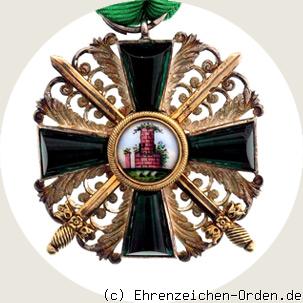 0
0 -
More detailed the Brazilian Vic.
Tipe 2

Reverse

Detailed : J S ( Jorge Soubre)
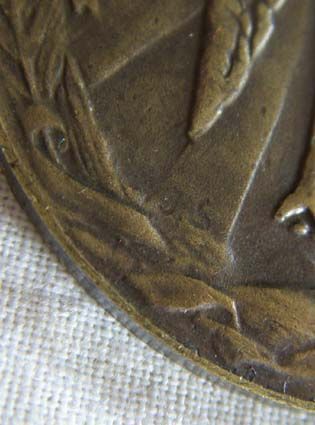 0
0 -
Hi Bilco
This in an excellent condition! but the Ribbon is original and very well preserved.
I like that metal bar in the presentation of medals French and Belgians.
Soon I get my Vic French (from France)
 I will show photos.
I will show photos.Lambert
:cheers:
0 -
My guess is that the size is at the center of the medal. The center is much larger orders in the Crimean War.
I'm right?
Lambert
still learning :)
0 -
Hi Tim
Medallion excellent, very cool!
I unfortunately do not have that .. yet.

I have other coins and medals to show soon.
Personally, I like everything about the First World War.
lambert
0 -
Transcript of the Decree that created the Brazilian Vic.
DECREE 16.074 - 22 JUNE 1923
It creates a commemorative medal inter-ally, called "Victory Medal"
The President of the United States of Brazil, whereas in January 24, 1919 the Peace Conference adopted the proposal of Marshal Foch, so that all the fighters of the Great War received a commemorative medal that same used by them at all parts of the world, will keep the eternal feelings of camaraderie that you do on the battlefield, the strength of armies, and ensure the memory, during peace, the greatness of the Allied nations, whereas an inter-allied established later that this medal was called " Victory Medal," and that the rules for granting it should be such as to avoid its confusion with any other commemorative medal, decides on the proposal of Ministry of the Navy, and in harmony with the basic principles set out by the commission, order the following:
Article 1 It is a commemorative medal created inter-ally, called " Victory Medal."
Article 2 This medal is bronze frosted round with 0m, 036 in diameter, 0m, 004 thick, and fringed with two palms, and the center of the front of the symbolic figure of Victoria, standing in front on a plain background and no inscription or date. In the back will have the national shield encircled by the shields of the allied and associated nations, all encircled by the 'Great war for civilization. "
Article 3 The medal is suspended from a ribbon, like all the allies and associates, whose colors are the rainbow of two juxtaposed side by red with a white wire on each side. This Ribbon will 0m, 0m, and 036 wide, 040 long.
Article 4 will be entitled the " Victory Medal " all military personnel or civilians who have been employed in actual war service by a minimum space of three months, set out below:
1º, Officers, NCOs, and lower squares in the Navy, including cabin boys and contractors, who served in the squadron in military operations at any time between the departure of their units on the island of Fernando de Noronha on August 1, 1918 and his return to the same island on May 19, 1919;
2º, officials of the National Army and below that, being incorporated into the French Army by virtue of art. 2º do decreto n. 2 of Decree No 3.427, de 27 de dezembro de 1917, com ele combateram; 3427 of 27 December 1917, fought with him;
3º, the naval officers who are appointed by the warnings of the Ministry of Marine ns. 140, 141, 142, 143 and 144, January 8, 1918, 386, 387, 388 and 389 of January 22, 1918, to practice and study aviation in England, there were actually employed on duty patrolling back ;
4º, the Navy officers, appointed by the Ministry of Marine warnings ns. 1233, to March 29, 1917, 3447, to September 18, 1917, and 4747 of December 12, 1917, to serve in the Navy of the United States of America, which in this Nation warships, made part of U.S. forces in war service;
5º, the Brazilian civilians who enlisted and fought in Allied armies or navies;
6º, the Brazilian military and naval attaches next to England, France, Italy and United States of America, who have served in these places after October 26, 1917 until the date of the armistice;
7º, members of military missions organized by the warnings ns. 4680 of December 7, 1917 and 4735 of 11 December 1917, the Ministry of Marine and notice number 428 of 18 May 1917, the Ministry of War, who served on these committees at any time between the dates of appointment and the armistice;
8º, the Brazilian members of the medical mission organized by the decree n. 13092 of July 10, 1918, who have been in hospitals for victims of war or administration work relating to them in France, Italy, England and Belgium;
9º, the military or navy of the National Army who received the Cross of Campaign 1914 to 1919, referred to the decree n. 15600 of August 11, 1922, and those who have cooperated effectively in war service.
Article 5 shall not be entitled * Victory Medal ", with about one quarter included in the article, the deserters, convicts and those excluded from the Army and Navy, by sentence or disciplinary action.
Article 6 The competent departments of the Ministries of War and Navy will organize from the outset to understand relations all military, currently living in conditions of receiving the Victory Medal *, "according to the provisions of this decree, and all civil under the same conditions that these ministries have depended on the time of services rendered or settlements that have them. The list shall show for each of the military therein, the current post and had to order the services provided.
Article 7 The military that are not included in the relations mentioned in art. 6, or civilians about whom there are no official settlements, require the Ministry of War or Navy, as appropriate, the grant of the Victory Medal * "gathering documents to prove their right.
Article 8 organizes the relations mentioned in art. 6º, or established rights of applicants, according to art. 7º, will be plowed the decrees granting the medal and sent to interested diplomas and medals, including those signed in the Ministries of War and Navy, respectively, by the heads of the Central Department of the Navy and the Province.
Article 9 A * Victory Medal "will be used on the left breast, as follows:
1º, the military, according to its uniform policy;
2º, in uniform who, by their regulations, whether to use the ribbond of the medals or decorations on a folded Bar instead of themselves, will also be used to ribbon * Victory Medal " folded over a Bar;
3º, and civilians, as well as the military, in civilian clothes, they will use the medal on the left breast.
Article 10. And civilians, as well as the military in civilian clothes may use the tape's distinctive folded over a Bar, as indicated in art. 9º, paragraph 3 rd, with the narrow ribbon with the colors themselves, stuck in his lapel, or even chest, a reduction of the medal, with 0m, 015, in diameter, suspended or current pin itself.
Article 11. Revokes the provisions to the contrary.
Rio de Janeiro, June 22, 1923, 102 and 35 of the Independence of the Republic.
Arthur da Silva Bernardes.
Alexandre Faria de Alencar.
Setembrino Fernando de Carvalho
0 -
Hello Lambert,
Does the vic you posted in # 5 & 6 have any edge markings? The larger ball suspender is characteristic of French manufacture. I would expect to see the word 'BRONZE' and/or a mintmark on the edge.
Is this the case?
Regards,
Rob
Hi Rob.
# 4 The medal has no marks, details very bad .. I believe it is a medal at the end of production or the cast was very worn.
I make new photos.
Medal # 5 is marked on the edge of the foot "Victory" a triangle mark, not sure if it's made in France or Belgium.
I also provide pictures that detail.
lambert
0 -
I would start this topic with commemorative medals.
I believe this is the first time you can see this medal.
Commemorative Medal WWI Armistice
This medal is in the Catalogue of the Medals of the Republic - Kurt Prober - 7C - Pag: 64, struck at the mint in Rio de Janeiro in 1918.
70mm , Copper Medal.
Medal design and engraved with Augustus G. Girardet.
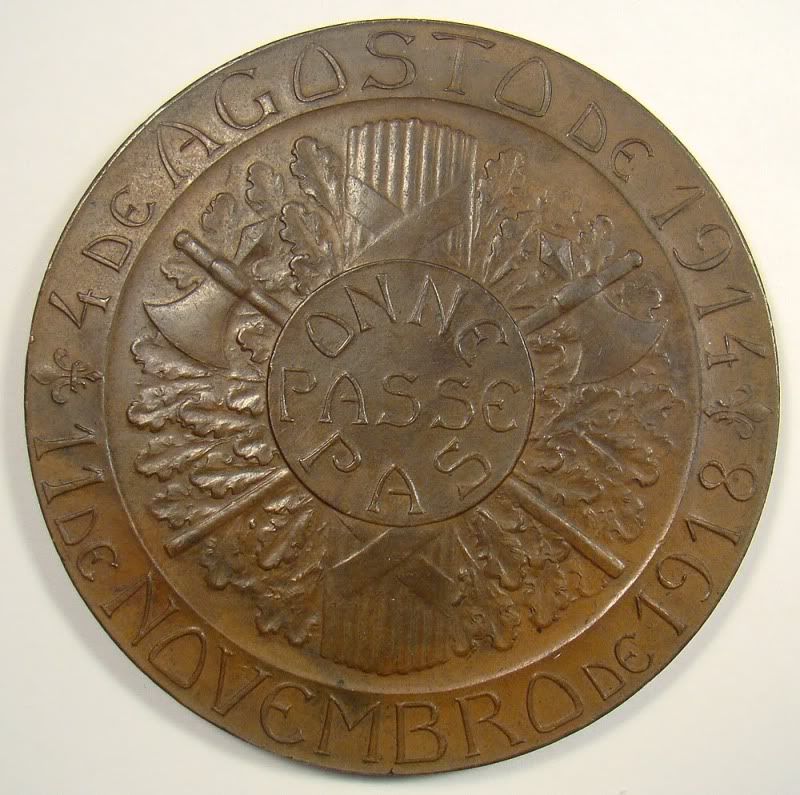
Obverse: in French "On Ne Pas Nasse"
August 4, 1914 * November 11, 1918
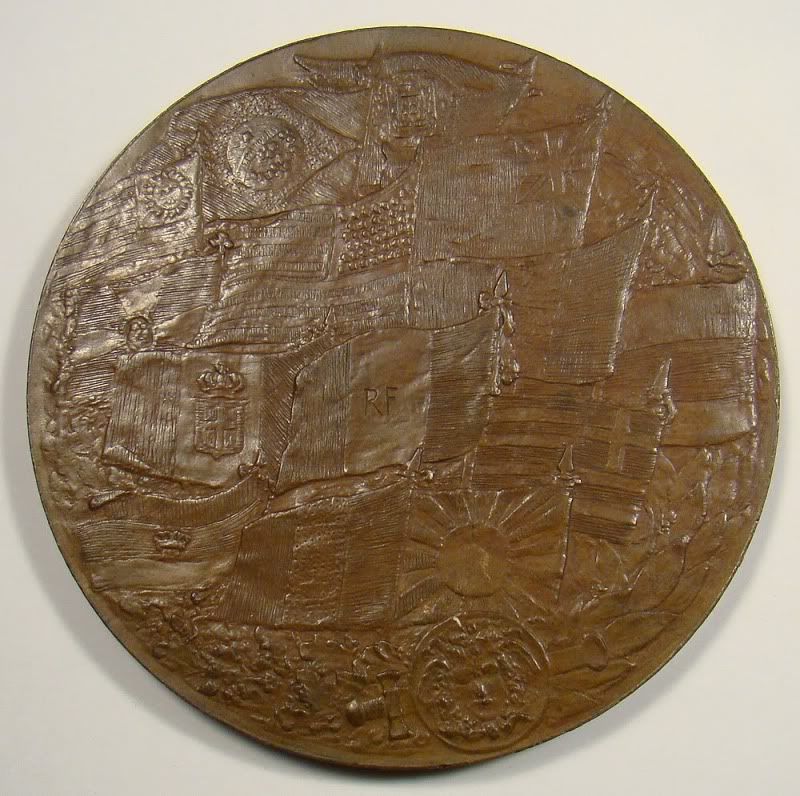
Verse: Flags of the 13 victorious nations
Photo: Milton Basile
0 -
My Service Medal of the New Jersey City , named to: J.M. LINDEN
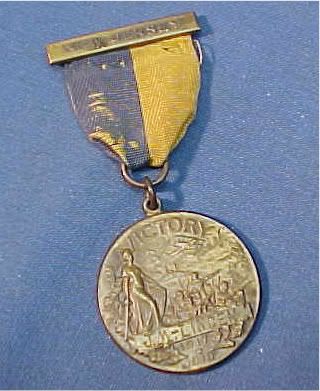
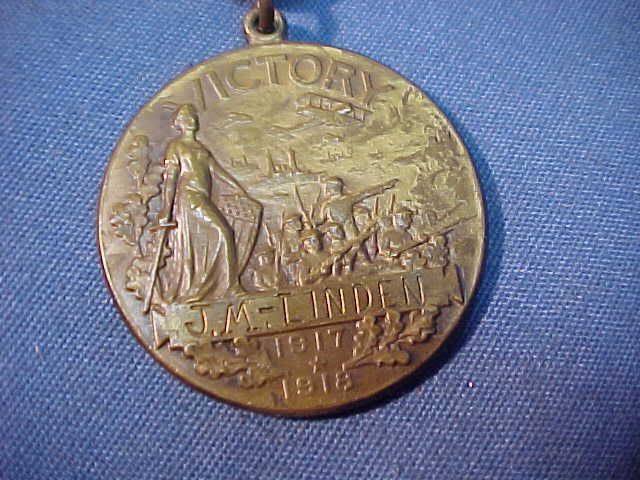
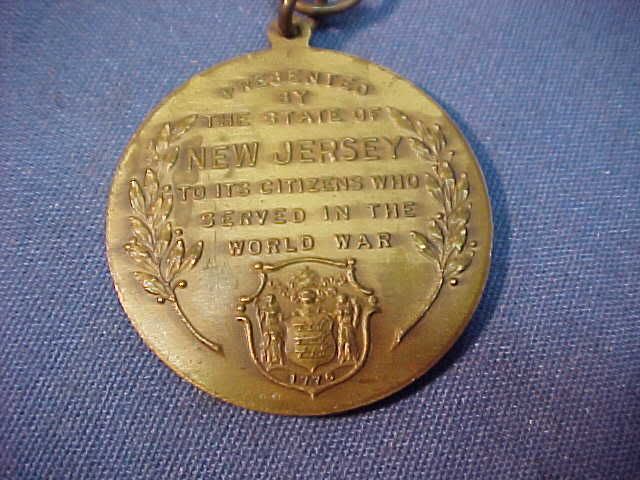 0
0 -
beautiful chocolate color.
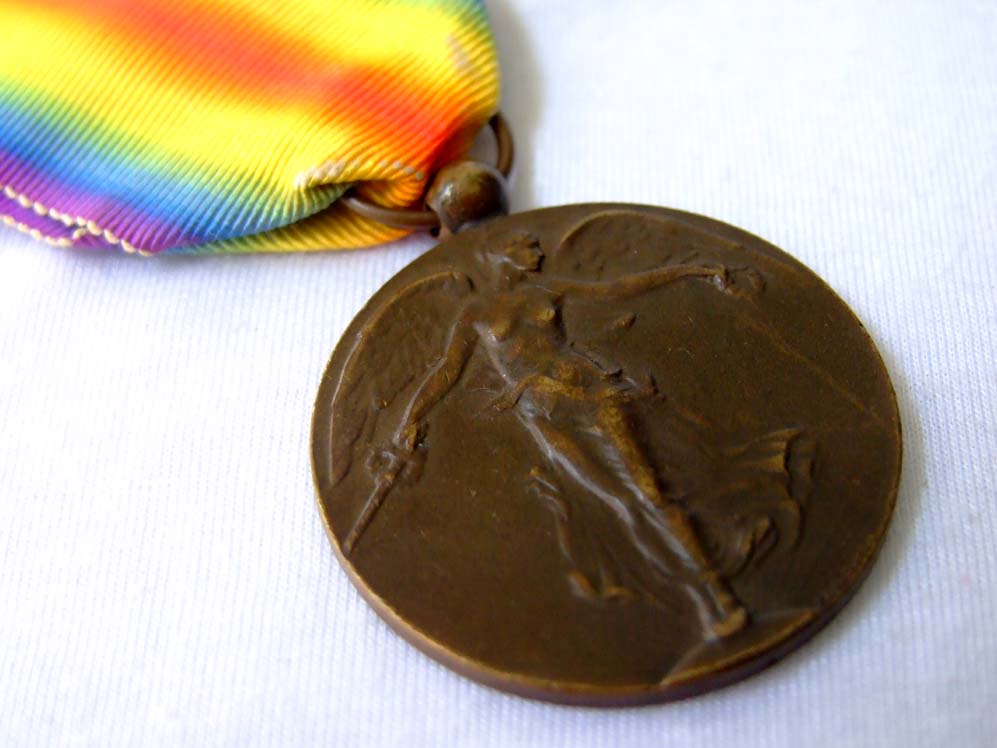
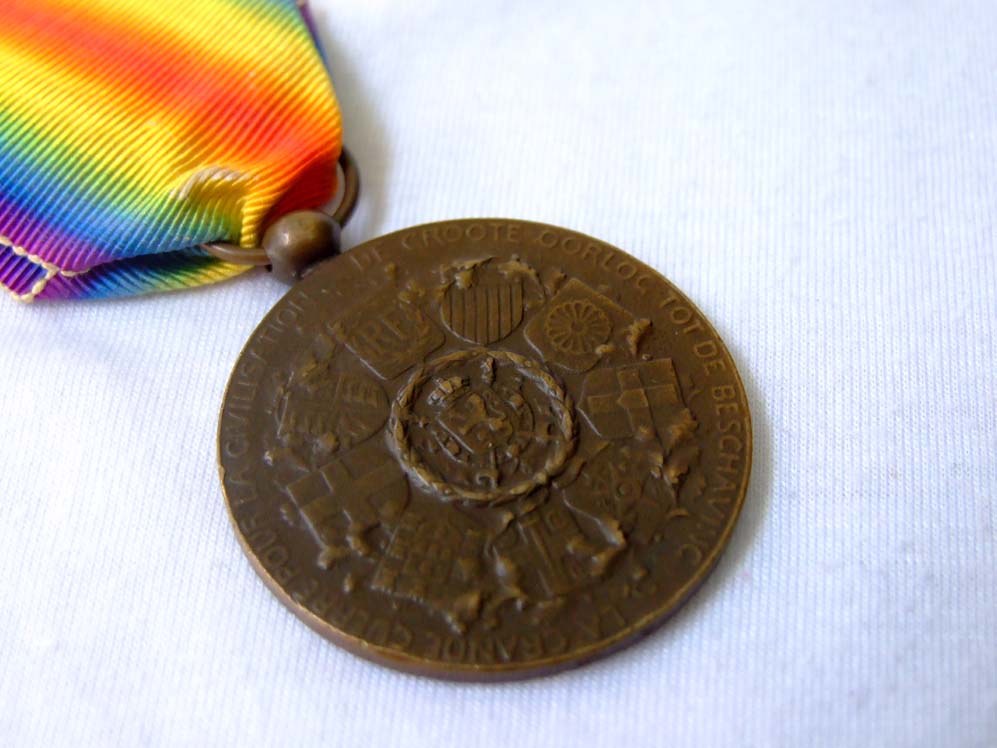 0
0 -
-
These are exemplary of my Belgian Vic.
in cool conditions.
A curious red cross, according to the seller, would be medical staff. others say it may be wounded, an unofficial version?
well, only time will tell.
0 -
Thought it was a case of the knob being soldered on upside down, where the "cut" would have been on the bottom.
Well Tim, I just thought this hypothesis:
This would be one of the most plausible answers, one mistake can always happen in the production of MVs. this was not the first time.
0




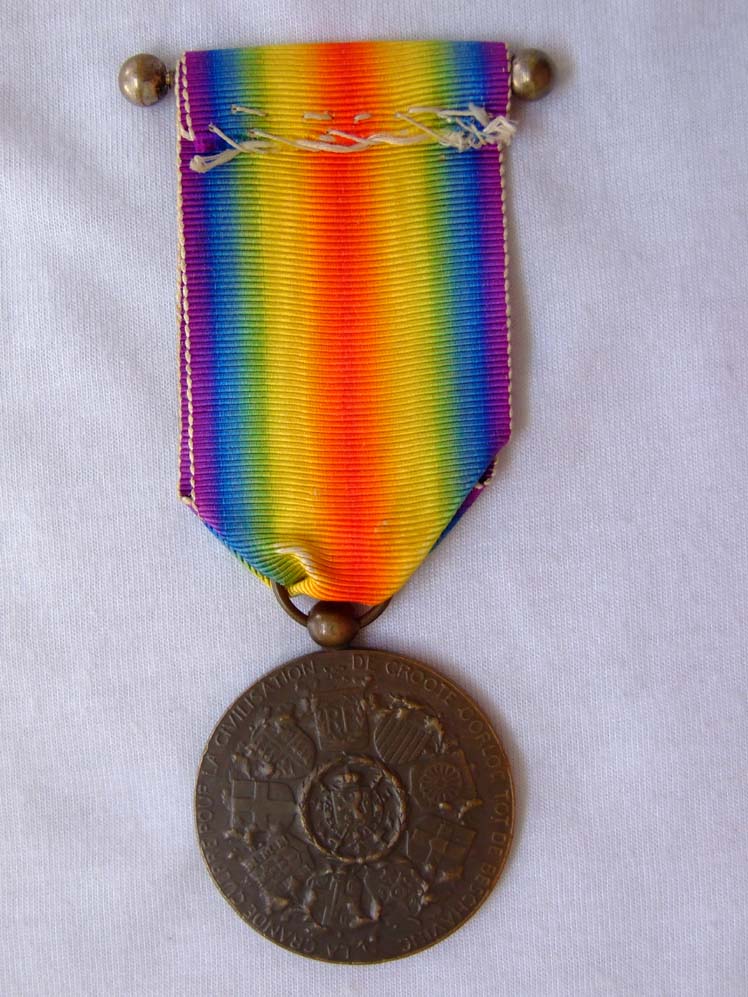
Unknown volunteers medal.
in France
Posted
Exactly! presenting the medals are different in the designer and the type of suspension. Besides the fact that there is nothing written on the obverse of this medal.
This is one of the many variants (unofficial) Medal of volunteers
Note this same type of suspension in this group Mini.
In French: Médaille d'Engage volontaire
lambert